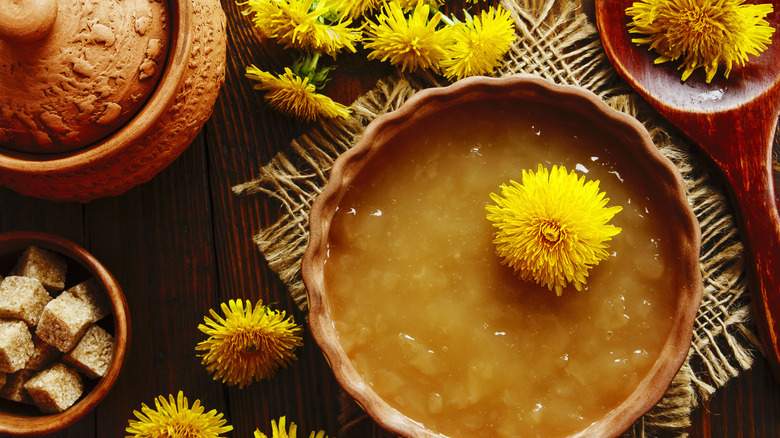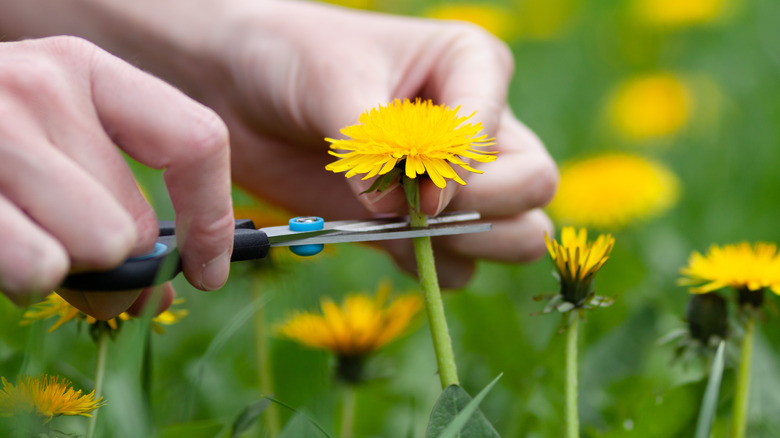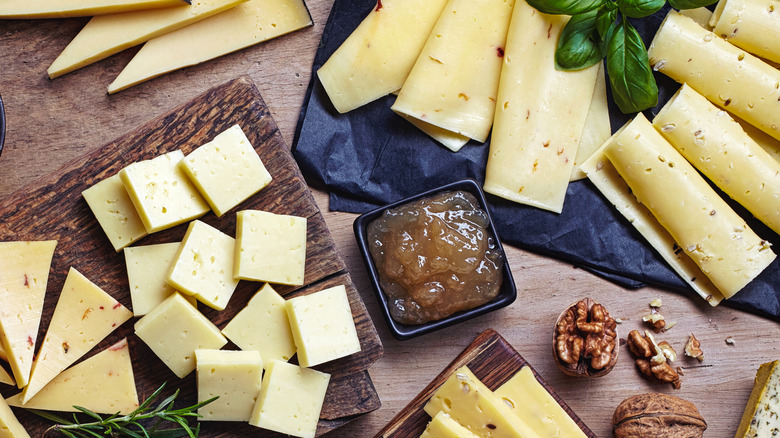The French Dandelion Jelly That Somehow Tastes Like Honey
As spring flowers blossom and the weather warms, one of the most beautiful sights is a field of bright yellow dandelions in full bloom. Often thought of as a weed to be picked and discarded or removed with pesticides, dandelions are important members of the natural ecosystem providing nectar and pollen to bees and insects in the early spring.
They also have long been foraged by humans for their taste and nutritional benefits, including anti-inflammatory and blood sugar regulation properties, as well as use as a natural diuretic. Dandelion roots are often made into medicinal supplements and teas, and the bitter, peppery roots greens can be used as an inventive base for salads, like homemade dandelion greens with fried egg, croutons, and anchovy dressing, or crushed and muddled to impart flavor in mocktail recipes.
While dandelion root has gained greater familiarity in the last few years, many people don't realize that the vibrant dandelion flowers have a sweet, honey-like taste, and are traditionally made into a syrupy jelly called cramiallote, originating in the Franche-Comté region of eastern France. Often compared to honey because of its sweet, floral notes, dandelion jelly is the perfect sweet accent for all your spring recipe needs.
How dandelions are made into jam
Dandelion jam can be found in artisan food shops domestically and abroad, or made at home using food-grade dandelions. To make fresh dandelions into jam — this variety is known in France as cramaillotte – artisans and home cooks alike gather several hundred dandelion flowers from blooming fields. Foraged and picked flowers are then washed and dried using a dehydrator, or by laying the flowers out on a sheet pan to dry in the heat of the sun. Once dried, the golden petals are removed from the bitter stem and greens, as well as the fluffy innards of the flower. Dried dandelions are also available online, and those serve as a good option for those in more urban areas where pesticides and other contaminants are a concern.
To make dandelion petals into jam, the dried flowers are simmered with citrus and sugar in a saucepan. Sliced oranges and lemons are the most common citrus components, and complement the floral dandelion notes to result in a delectably delicate, subtly tart, and sweet flavor reminiscent of grassy fields and spring. After the mixture has simmered to extract the flavorful goodness, the petals and rinds are strained and cooked further to thicken the floral sugary extract. The jelly is then transferred to sterile jam jars and cooled for future enjoyment in a variety of dishes, or to lick straight from the spoon.
Use the jelly to top your favorite foods
The texture and concentration of flavor can range between different dandelion jellies, based on the ingredients and how long the jelly is simmered. For instance, the consistency can be on the thinner side, similar to maple syrup, or made more viscous into a jam. Sometimes gelling sugars or thickeners like pectin are added to result in an even thicker, chunky jelly, similar to marmalade.
Depending on your personal preference and the consistency of your dandelion jam, it can be drizzled atop creamy cheeses like brie, or spread with a knife on a thick crusty piece of toast for a satisfying breakfast or afternoon snack. Dandelion jam is also a great vegan alternative to honey for snacking, baking, or cooking for those looking to avoid or reduce animal ingredients or bi-products. Swap it out for honey as a floral twist to homemade salted honey pie, or spoon it atop plain Greek yogurt for an extra sweet morning treat.


